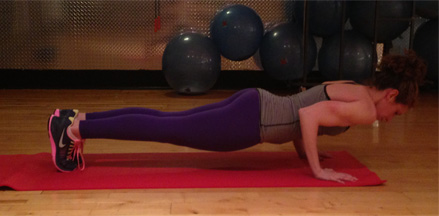Most are under the impression that to lose weight or fat you need to spend a good chunk of time doing cardio. Jump on a treadmill for 45-60 minutes = burn the most calories = drop the weight. That mentality does hold some truth because calorie intake vs expenditure is the key to weight loss. But the bigger question is what does that cardio workout consist of?
Low intensity steady state (LISS) cardio workouts are often what you see in the gym. This type of workout consist of purely low to moderate type of exercise. An example would be walking on the treadmill or riding a bike and being able to hold a conversation. When considering our body’s energy system and what it uses for fuel, LISS does help with burning fat as a whole. At a lower heart rate (120 beats per minute or less), your energy source is primarily body fat. Once your heart rate starts to climb (140 bpm +) and you begin to fatigue, your body will start to look for other sources of fuel such as blood sugar and muscle glycogen. When your heart rate reaches a consistent 150-160 bpm for 45-60 minutes, your body will revert to using fat as fuel. Sounds great when you’re focused on losing fat. However, in the initial weeks of LISS cardio workouts, you will see a change but your body quickly adapts, your metabolism will plateau, and eventually the weight loss will cease. That same workout will be what your body will use simply to maintain.
If one of your goals is to increase strength and muscle tone while losing fat, then LISS aren’t the workouts for you. During long periods of LISS, after it has used fat as fuel, your body will start to search for glycogen. Once your body is depleted of glycogen (mainly due to improper diet), its next source will be protein. Once it starts to use protein, your body begins to waste its muscle, known as catabolism. This works against all the strength training that one does for that toned and sculpted look.
Consider high intensity interval training (HIIT). This method of exercise allows for high intensity training alternated with short periods of recuperation or low intensity training. An example of HIIT would be running at a fast speed on a high incline for 1-2 minutes followed by a moderate pace walk or rest. Originally developed by track coaches to train their runners for speed, HIIT has scientifically proven to burn more body fat – in less time- than LISS workouts. The main reason for this is due to the great calorie burn that’s maintained after the workout is over, better known as EPOC (excess post-exercise oxygen consumption). HIIT workouts require muscle strength and endurance. Once you develop muscles and continue to strengthen them, your body burns calories even when you’re sitting around doing nothing. This, in turn, helps to increase your metabolism. This “resting” metabolism helps muscle cells promote fat burning and prevent fat storage.
Win-Win!
This doesn’t mean that LISS workouts are not effective. They’re actually great for beginners that have just started a fitness routine and for those that may not be ready for the intense interval workouts. But if you’re looking to maximize your workouts (especially those that have limited time), ditch the long cardio workouts and TRY THIS! on a treadmill. Have fun!
1. Walk at 3.5 speed on 3.0 incline (1 min warm up)
2. Light jog at 4.5 speed on 5.0 incline (1 min warm up)
3. Run at 7.0 – 11.0* speed on 10.0 incline (1 min)
4. Walk at 3.5 speed on 10.0 incline (2 min)
5. Run at 7.0 -11.0* speed on 8.0 incline (2 min)
6. Walk at 3.5 speed on 8.0 incline (2 min)
Repeat steps 3-6 two more times and cool down with a 3.5 walk on 3.0 incline for 2 minutes. And don’t forget to stretch!
*Depending on fitness level, minimum speed is 7.0 or maximum speed is 11.0.
